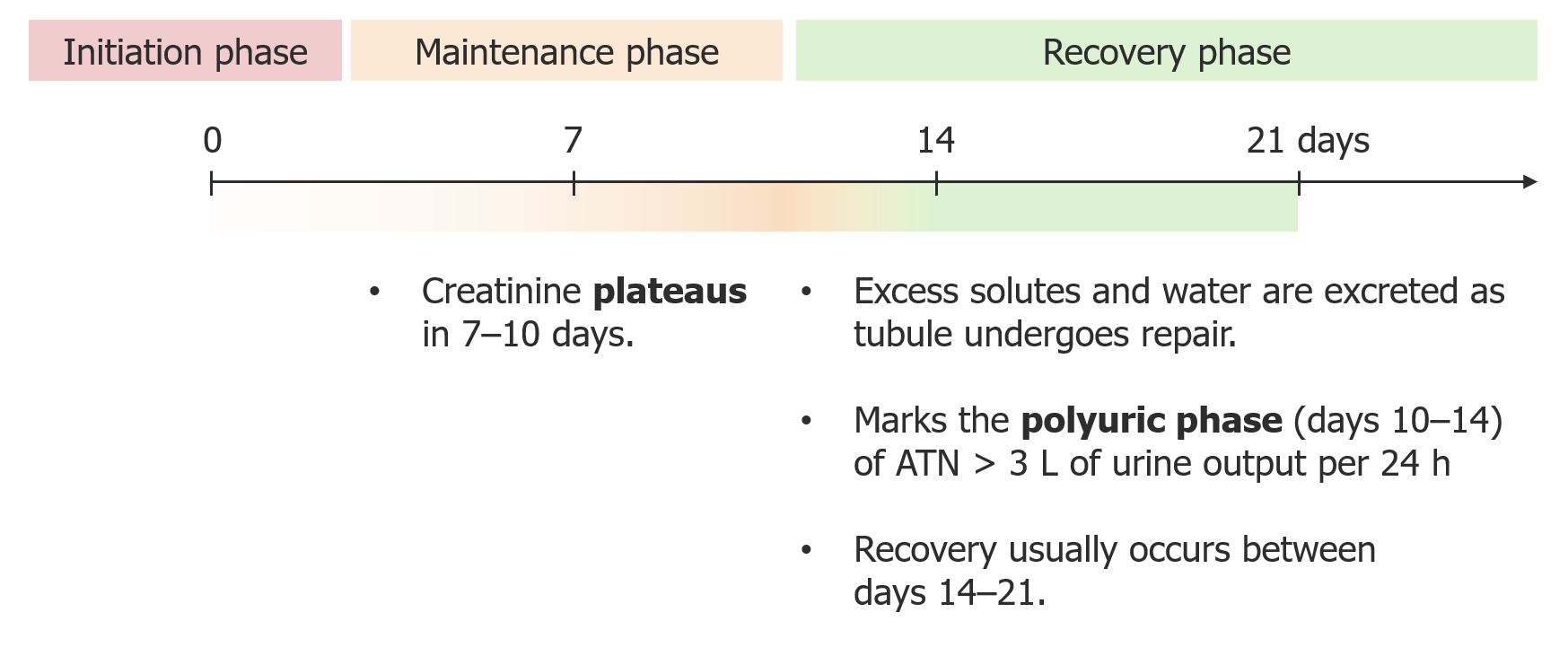Playlist
Show Playlist
Hide Playlist
Acute Interstitial Nephritis
-
Slides Acute Interstitial Nephritis.pdf
-
Reference List Pathology.pdf
-
Download Lecture Overview
00:01 An important topic is drug induced interstitial nephritis or also called acute interstitial nephritis or more commonly heard on the ward as AIN. 00:11 Now, this is when you have acute inflammation of the renal interstitium due to exposure to toxins or drugs. 00:19 Signs and symptoms include a fever, rash and you see an eosinophilia and 20 to 35% of patients, only about 10% of patients exhibit all three of these It should also be noted that there's no standard time frame for the onset of medication induced acute interstitial nephritis to take place. 00:37 So clinicians must be constantly on the lookout. 00:39 Now, how do you remember the causes of interstitial nephritis? Well, we used the mnemonic, P SQUARE. 00:46 The first is P and these include penicillin, the antibiotic; phenytoin, the antiepileptic; and proton pump inhibitors like pantoprazole. 00:56 Now, then you have S and here we have sulfa drugs such as Bactrim. 01:01 Q, quinolone and quinidine and U are drugs that make you urinate such as Lasix or hydrochlorothiazide. 01:01 Q, quinolone and quinidine and U are drugs that make you urinate such as Lasix or hydrochlorothiazide. 01:10 A for allopurinol and Advil, ibuprofen or NSAIDs here, and then R is for rifampin which recall will rev up cytochrome P450 and E is that this will cause an eosinophilic cast, a very high yield point to remember. 01:28 is that this will cause an eosinophilic cast, a very high yield point to remember.
About the Lecture
The lecture Acute Interstitial Nephritis by Mohammad Hajighasemi-Ossareh, MD is from the course Tubulointerstitial Diseases.
Included Quiz Questions
Which of the following is an important feature in acute interstitial nephritis?
- Eosinophilic casts
- Granular casts
- Hyaline casts
- RBC casts
- Tubular casts
Customer reviews
5,0 of 5 stars
| 5 Stars |
|
5 |
| 4 Stars |
|
0 |
| 3 Stars |
|
0 |
| 2 Stars |
|
0 |
| 1 Star |
|
0 |




